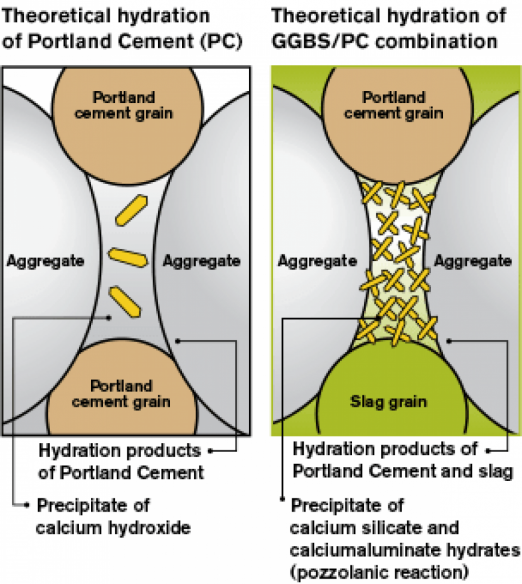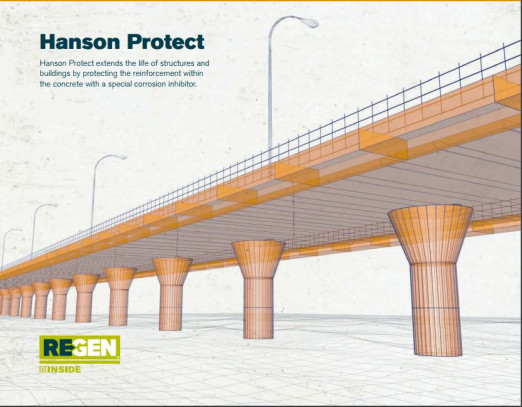Concrete supplied by Hanson has been used to create three structural slipform cores as well as 10 concrete-encased columns in the development of a 19,000m3 office building. The C32/40 concrete used for the core elements incorporated Regen, helping reduce the environmental impact of the project.
There has been an increase in the number of contractors turning to slipform concrete as the most efficient method of constructing structural cores. The system offers a number of benefits – speed of construction, efficient use of plant resources, improved health and safety – and was chosen by specialist contractor Mitchellson for the construction of a new 12-storey office building in Hammersmith, west London.
Three structural concrete cores, which stand 52 metres high, were cast using C32/40 concrete placed into a complex slipform rig - designed, supplied and operated by specialists UK Slipform Ltd.
This allowed a single, integrated, jacking system to be used to lift the formwork of all three structures simultaneously as a single unit, reducing the overall construction programme. At the height of production, the slipform was able to rise at a rate of 2.4 metres per day.
Slipform construction requires the concrete to be placed and compacted in layers, each from a single batch, so that at any given time the concrete within the 1,200mm deep formwork is in a progressive state of setting - from fresh and fully plastic at the top, to hardened but not fully cured at the bottom.
Achieving and maintaining this requires careful attention to mix design and placing methods. Several mixes were used incorporating admixtures from Sika to achieve the required workability retention, ease of placement and setting time.
To contribute to the reduction of the overall embodied CO2 of the concrete, 25 per cent of the cement content was substituted with Regen (ground granulated blast furnace slag). Regen is a by-product of iron-making and its manufacture requires much less energy and produces around one tenth of the CO2 emissions of Portland cement. It also requires no mineral extraction and prevents thousands of tonnes of waste being disposed to landfill. As a result, its use in the slipform cores at 12HG reduced the embodied CO2 of the concrete by 70kg/m3.
Hanson also supplied the concrete to form 10 7.5m high concrete encased columns with an 800mm diameter to a C-type finish, which had to be cast monolithically.
The restricted head room and tight nature of the site meant that traditional steel forms were impractical. After careful consideration, a bespoke polystyrene mould with ABS liner was chosen along with a high quality self-compacting concrete mix from Hanson. 100mm diameter well-void tubes with holes at 300 centres were placed in each column to form a sacrificial tremie pipe, ensuring any issues relating to the segregation of the concrete during the placement process were overcome.


